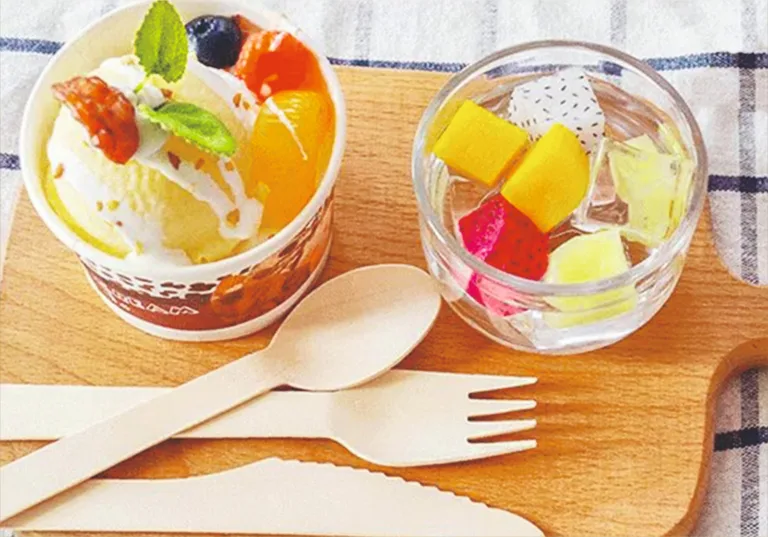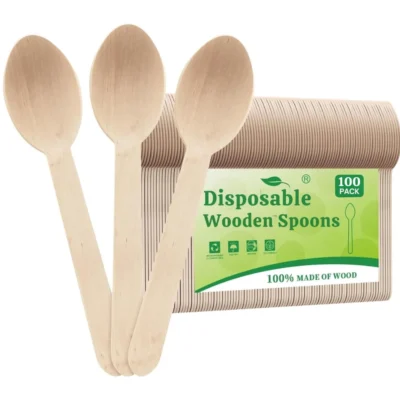Wooden Cutlery
Discover our eco-friendly disposable wooden cutlery, featuring durable wooden spoons, wooden forks, and wooden knives. Perfect for parties, picnics, and events, these biodegradable utensils offer a sustainable alternative to plastic. Choose our wooden cutlery for convenient, stylish, and environmentally safe dining solutions.
Products: Spoons • Forks • Knives

Disposable Cutlery Products

Wooden Knives 16cm
£5.99 – £16.99Price range: £5.99 through £16.99Select options This product has multiple variants. The options may be chosen on the product page
Wooden Forks 16cm
£5.99 – £16.99Price range: £5.99 through £16.99Select options This product has multiple variants. The options may be chosen on the product page
Wooden Spoons 16cm
£5.99 – £16.99Price range: £5.99 through £16.99Select options This product has multiple variants. The options may be chosen on the product page
Disposable Wooden Cutlery Benefits For Sustainable Dining & Eco-Friendly Events
Disposable wooden cutlery offers a simple and eco-friendly alternative to plastic utensils. It breaks down naturally and reduces plastic waste, making it better for the environment. I found that these options are easy to use and often just as strong as plastic cutlery.
Many people want to reduce their impact on the planet but still need convenient products. Wooden cutlery fits this need without compromising on function or cost. I’ll explain why it’s becoming popular and how it can help you make greener choices.
Types of Disposable Cutlery
When choosing disposable wooden cutlery, I look for items that balance strength and usability. Each type serves a specific purpose and has design features that make it suitable for different meals.
Wooden Forks
Wooden forks usually have three or four tines. They need to be sturdy enough to hold foods like salads or pasta without breaking. I find that disposable wooden forks offer a good balance between durability and comfort.
The surface is often smooth to avoid splinters and to make eating pleasant. They are lightweight, which makes them ideal for takeaways or picnics. Some wooden forks come with a slightly thicker handle to improve grip.
Wooden Spoons
Wooden spoons are versatile. I use them for soups, ice cream, and other soft or liquid foods. The bowl part of the spoon is usually shallow but wide enough to carry a good amount of food.
Most disposable wooden spoons are crafted to resist soaking up liquids quickly, which helps them maintain their shape during use. They are smooth and gentle on the mouth, which is important for hot foods.
Wooden Knives
Wooden knives are designed for cutting soft foods like cooked vegetables, bread, or cake. They don’t cut as sharply as metal knives but are strong enough to perform light cutting tasks.
The blade edge is often serrated or slightly rough to help with slicing. I note that disposable wooden knives can sometimes splinter if used too aggressively, so they work best for foods that need minimal cutting effort.
Materials and Sourcing
I focus on using wood that offers strength, smooth texture, and a safe experience for users. The wood needs to handle food without breaking or splintering. At the same time, I pay close attention to where this wood comes from to make sure it supports responsible forestry.
High-Quality Wood Selection
I choose wood that is strong yet lightweight for disposable cutlery. This wood must be smooth to avoid splinters and safe to use with all kinds of food. Commonly, woods like beech and birch meet these needs well.
The grain of the wood is important because it affects durability and feel. I avoid soft, crumbly woods. Instead, I select denser types that resist moisture and don’t easily break.
The wood’s colour and texture also matter. Light-coloured woods like birch give a clean look and can be polished to a fine finish. This adds to the feeling of quality and safety.
Sustainably Sourced Birchwood
Birchwood is popular because it grows quickly and is renewable. I source birch only from suppliers certified for sustainable forestry. This means trees are replanted, and forests are protected from overcutting.
Sourcing sustainably ensures that using birch wood does not harm the environment or wildlife. The certification process includes careful monitoring of how much wood is harvested.
Additionally, shipped birchwood is often selected for low chemical treatment. This reduces pollution and keeps the cutlery more natural, which is better for health and the planet.
Benefits and Environmental Impact
I see disposable wooden cutlery as a practical choice that can reduce plastic waste and helps the environment in several ways. It offers clear benefits compared to plastic, especially in how it breaks down and affects health.
Alternatives to Single-Use Plastic
Disposable wooden cutlery is one of the best alternatives to single-use plastic. Plastic forks and spoons can take hundreds of years to decompose, causing pollution in oceans and landfills.
Wooden cutlery is made from natural wood like birch or bamboo, which is renewable and easier to source sustainably. It avoids the toxic chemicals often used in plastic production.
Using wooden cutlery reduces plastic waste and the environmental problems tied to it. For people or businesses trying to cut plastic use, wooden options provide a functional and eco-friendly solution.
Compostability and Biodegradability
One of the biggest environmental benefits of wooden cutlery is that it is compostable and biodegrades quickly. Most wooden utensils break down completely within months under the right conditions, leaving no harmful residues.
Commercial composting facilities can process wooden cutlery alongside food waste, turning it into healthy soil. Even if it ends up in a landfill, wood generally decomposes faster than plastic and doesn’t release microplastics.
Still, to compost properly, the wooden cutlery should be free from coatings or chemical treatments that could slow decomposition or cause pollution.
Consumer Health and Safety
I pay attention to the safety of wooden cutlery because it comes into close contact with food. Wooden utensils are generally free from harmful chemicals like BPA or phthalates found in some plastics.
However, it is important to choose wooden cutlery that is untreated and food-grade. Some cheaper products might be coated with varnishes or glues that could be unsafe when heated or used with hot foods.
Wood is also less likely to shed microplastics, which have raised health concerns. Overall, wooden disposable cutlery tends to be safer for consumers, but buying from trusted sources is essential to avoid potential risks.
Usage, Disposal, and Best Practices
I find the right use, careful handling, and correct disposal of disposable wooden cutlery important to get the most from it. Knowing when to use it, how to handle it properly, and disposing of it correctly helps reduce waste and keeps things clean.
Suitable Occasions and Applications
I usually recommend disposable wooden cutlery for outdoor events like picnics, barbecues, and food festivals. It works well for takeaways and food stalls where washing cutlery isn’t easy.
These utensils are best for light to medium use, such as eating salads, pasta, or snacks. They might not hold up well for very heavy or hot food, like thick steaks or tough vegetables.
I find wooden cutlery to be ideal when you want something eco-friendly but still practical. They are often used in schools, offices, or parties where easy cleaning is a priority.
Proper Use and Handling
When using disposable wooden cutlery, I advise checking the cutlery before use. Make sure it’s not cracked or splintered to avoid any injuries.
I always hold wooden knives and forks firmly while eating to prevent breakage. Avoid bending the cutlery too much as it can snap.
It’s best to keep the cutlery dry until use. Moisture weakens the wood and reduces its durability. If you plan to use the cutlery with hot food or liquids, I suggest testing a piece first to see if it holds up.
Disposal Guidelines
After use, I recommend composting disposable wooden cutlery if facilities are available. Wood breaks down naturally and returns to the soil in a few months.
If composting isn’t an option, you can dispose of wooden cutlery in general waste. Avoid putting it in recycling bins, as it may contaminate recyclable materials.
Cutlery stained with food or oil should be composted if possible or thrown in landfill if composting isn’t available. Removing any non-wood parts like plastic coatings helps improve composting results.
I encourage users to check local guidelines for disposal, as rules vary by area and impact the environment differently.



